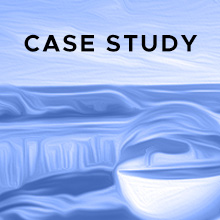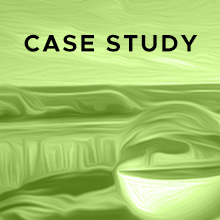Case Studies
The 2023 RemPlex Global Summit offered three Case Studies, summarized below. Each Case Study web page includes the video recording of the entire session plus the individual presentations as PDFs to view or download. Find all of the RemPlex Summit videos on the YouTube playlist.
|
|
|
|
The Use of Geophysics to Support Site Characterization, Remedy Implementation, and Monitor Performance at the Hanford Site
Tuesday, November 14, 2023 | 9:00 a.m. to 12:00 p.m. (Pacific Time)
 |
At complex nuclear sites like the Hanford Site, there is a need for cost-effective and innovative methods to support site characterization, remedy implementation, and monitor performance. Current technologies to support these objectives rely on borehole drilling and sampling. The information provided by these technologies is high-resolution and high-quality but sparsely distributed in space—thus, interpolation is required to fill gaps between boreholes, creating significant uncertainty. This case study focuses on the use of geophysical technologies to supplement borehole information on the Hanford Site by imaging between these locations and thereby reducing uncertainty. The Hanford Site has a decades-long history of using geophysical methods to support a variety of site objectives, including environmental management. Our presenters will provide a historical perspective on the use of geophysics on the Hanford Site, how borehole geophysics has played a role in development of the site conceptual model, and finally on recent geophysical applications in field and laboratory settings. The aims of this case study are to (1) introduce and share novel ways that geophysical technologies are being used at the Hanford Site to supplement borehole information, and (2) demonstrate technology developments that could benefit characterization of other complex remediation sites around the globe. |
Moab UMTRA: Progress Toward Closure at a Complex Groundwater Site
Wednesday, November 15, 2023 | 9:00 a.m. to 12:00 p.m. (Pacific Time)
 |
The Department of Energy, Office of Environmental Management (DOE-EM) Moab site is the location of a former uranium ore-processing facility, which is now undergoing work as the Moab Uranium Mill Tailings Remedial Action (UMTRA) Project to address the mill tailings and contamination in the underlying groundwater. Located in the state of Utah next to the Colorado River, the site spans 480 acres, of which the mill tailings pile covers 130 acres. The 16 million tons of uranium mill tailings are in the process of being relocated off site to an engineered disposal cell at Crescent Junction, Utah. The groundwater has both uranium and ammonia contaminant plumes. In fiscal year 2023, a team of Network of National Laboratories for Environmental Management and Stewardship (NNLEMS), DOE, and Moab contractor staff conducted a review of technology approaches for the site, resulting in a set of actionable recommendations. This case study will present information on the history of the site, the complexities of the hydrogeology and contaminant plumes, the risk and environmental protection issues, and proposed solutions for making progress toward transition of the site to long-term stewardship under the DOE Office of Legacy Management. ► Watch the Moab Case Study video and find the presentations here. |
Delivering Nuclear Site Cleanup in the United Kingdom
Thursday, November 16, 2023 | 9:00 a.m. to 12:00 p.m. (Pacific Time)
 |
The Nuclear Decommissioning Authority (NDA) is responsible for the decommissioning and cleanup of legacy nuclear sites in the United Kingdom (UK). Its mission is to complete the cleanup of UK legacy nuclear sites and release them for beneficial reuse. This mission is complex, involving hundreds of facilities across 17 sites across the UK and is expected to take over 100 years to complete and estimated to cost in excess of £120 billion to deliver. This session will share some of the experience and learning that has been accumulated in the UK and that is now informing the NDA’s national approach to delivering the remediation and cleanup of its sites. Challenges of delivering cleanup on nuclear sites in the context of the legislative and regulatory framework will be explored. In addition, the NDA’s approach to the determination of site end states will be presented in the context of examples from three sites: the Dounreay site in Scotland, the Trawsfynydd site in Wales, and the Winfrith site in England. ► Watch the United Kingdom Case Study and find presentations here. |